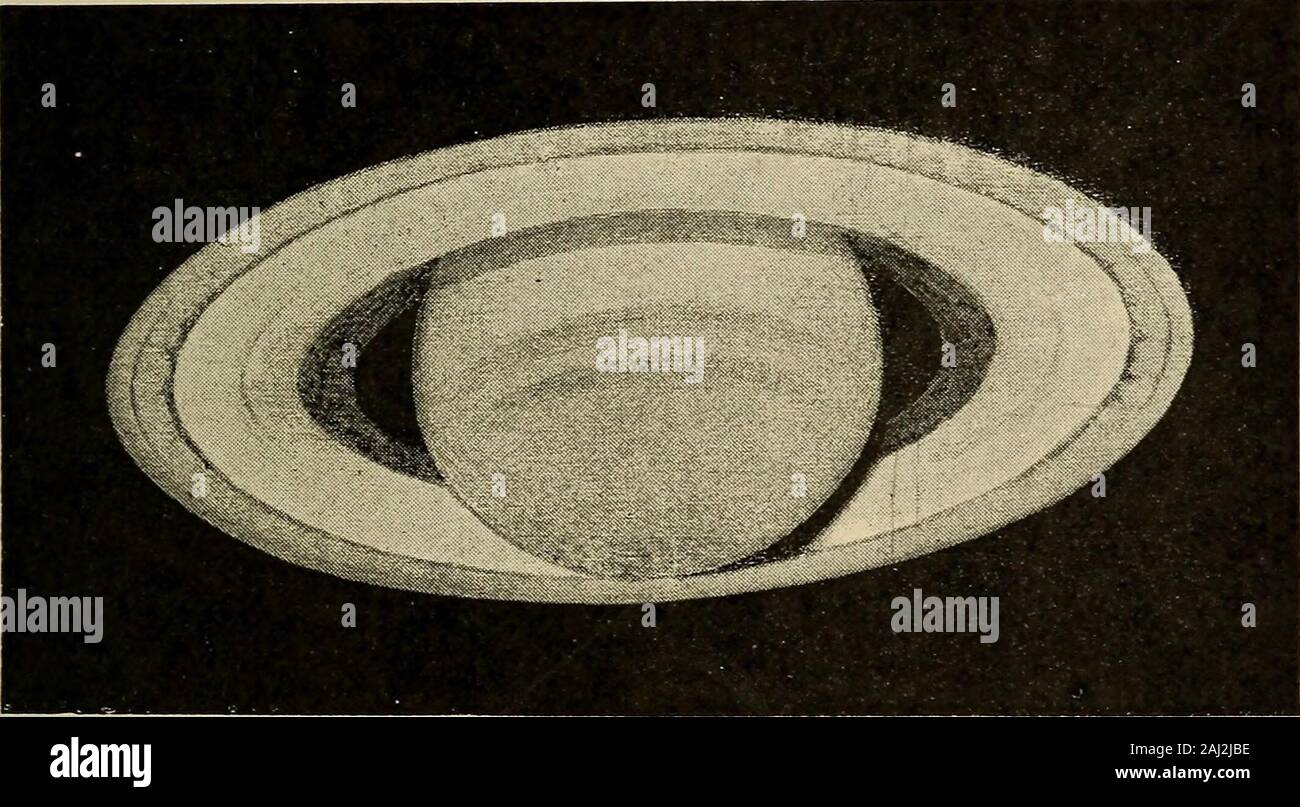Astronomy for amateurs . ly jfind other and more extraordinarydifferences on this planet. In the first place it is nearly nine and a half timeslarger than our world. It is a globe, not spherical, butspheroidal, and the flattening of its poles, which is one-tenth, exceeds that of all the other planets, even Jupiter.It follows that its equatorial diameter is 112,500 kilo-meters (69,750 miles), while its polar diameter measuresonly 110,000 (68,200). In volume, Saturn is 719 times larger than the Earth,but its density is only xV/o ^^ ^^^* own; i. ^., the mate-rials of which it is composed are much

Image details
Contributor:
The Reading Room / Alamy Stock PhotoImage ID:
2AJ2JBEFile size:
7.1 MB (468.4 KB Compressed download)Releases:
Model - no | Property - noDo I need a release?Dimensions:
2128 x 1174 px | 36 x 19.9 cm | 14.2 x 7.8 inches | 150dpiMore information:
This image is a public domain image, which means either that copyright has expired in the image or the copyright holder has waived their copyright. Alamy charges you a fee for access to the high resolution copy of the image.
This image could have imperfections as it’s either historical or reportage.
Astronomy for amateurs . ly jfind other and more extraordinarydifferences on this planet. In the first place it is nearly nine and a half timeslarger than our world. It is a globe, not spherical, butspheroidal, and the flattening of its poles, which is one-tenth, exceeds that of all the other planets, even Jupiter.It follows that its equatorial diameter is 112, 500 kilo-meters (69, 750 miles), while its polar diameter measuresonly 110, 000 (68, 200). In volume, Saturn is 719 times larger than the Earth, but its density is only xV/o ^^ ^^^* own; i. ^., the mate-rials of which it is composed are much less heavy, sothat it weighs only Q2 times more than our Earth. Its 158 THE PLANETS surface is 85 times vaster than that of the Earth, noinsignificant proportion. The dipping of Saturns axis of rotation is much thesame as our own. Hence we conclude that the sea-sons of this planet are analogous to ours in relativeintensity. Only upon this far-off world each seasonlasts for seven years. At the distance at which it gravi-. FiG. 47.—Saturn. tates in space, the heat and light which it receives fromthe Sun are 90 times less active than such as reach our-selves; but it apparently possesses an atmosphere ofgreat density, which may be constituted so that the heatis preserved, and the planet maintained in a calorificcondition but little inferior to our own. In the telescope, the disk of Saturn exhibits largebelts that recall those of Jupiter, though they are broader 159 ASTRONOMY FOR AMATEURS and less accentuated (Fig. 47). There are doubtlesszones of clouds or rapid currents circulating in the atmos-phere. Spots are also visible whose displacement assistsin calculating the diurnal motions of this globe. The most extraordinary characteristic of this strangeworld is, however, the existence of a vast ring, which isalmost flat and very large, and entirely envelops the bodyof the planet. It is suspended in the Saturnian sky, like a gigantic triumphal arch, at a height of some20, 000 kilome